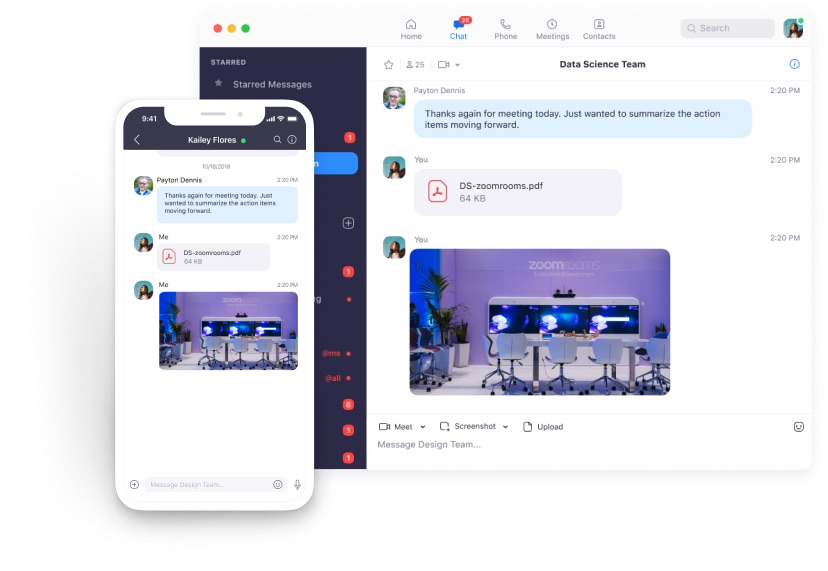
New working requires new approaches (and a little technology)
Ever since the concept of the “digital work lifestyle” was first mentioned in the early 1990s, it has a darling of the mainstream media, who were quick to (and still do!) talk about the benefits. For all concerned, a distributed, yet connected workforce offered advantages for employers and employees alike.
On offer for employers was an accessible yet often remote workforce, and employees would get a better work-life balance and some ability to work from home and at non-standard times of the day or night.
But pivoting around this changing dynamic was — until 2020 — making slow progress. When lockdowns hit all over the world, many organizations were found to be unprepared for the scale and speed of change that were thrust upon them. There was a scramble to equip as many staff as possible with the digital (and sometimes physical) tools needed to provide business continuity.
Changes in toolsets and practices
What has become apparent over the last 18 months is that attempting to replicate the old-style of work paradigm into new but similar ways can be inefficient. Staff working from home or in more local, dedicated small workspaces perform better when not attempting to reproduce the behaviors associated with a traditional central office or workspace. That situation touches on issues like working hours, informal chat (“watercooler gossip”), meeting rooms, seminars, exhibitions, and conferencing. All these stalwarts of business practice are taking new shapes as remote work behaviors continue to evolve.
The most obvious example of this shift has been in online conferencing. Instead of attending a large hall crowded with boots, and then peeling off to attend talks and lectures, digital attendees can pick and choose what they experience, from wherever they are. In general, virtual conferences attract many more people and organizations keen to showcase what they offer. Additionally, the roster of speakers is of a much higher standard, in general, as grade A thought leaders can speak for an hour from wherever they might be, then sign off after maybe a couple of hours virtual networking and/or Q&As.

Source: Zoom Video Communications
At a smaller level, meeting rooms can now be infinitely large, combining conference-style VOIP, with video conferencing feeds from remote offices, and attendees working from home or on the go, from desktop, laptop, or mobile.
Adjusting to the new
What is becoming quickly apparent is that while technological solutions (the leading vendors of which we feature below) like video conferencing, seminars, or text chats require a shift in attitudes as well as in working patterns.
For example, micro-gestures that would normally be subconsciously read from a speaker’s face are often lost through necessary video compression. Body language and tone of voice also provide similar behavioral clues yet are lost in many cases when digital communications are deployed.
Communication must be clearer, and that does not necessarily equate to audio and video quality, for example. Using text-based chat and email integrations into digital comms can clarify many of the details that might be missing from a video chat — yet as a form of comms, text-only also has its pitfalls. Many of the people we do business with are, we discover, quite different in person from how they come over from their emails, for example!
Changing the way we consider communication in a digital-first age will take time, of course. The millions of years of human evolution has taught us how to read others quickly and intelligently, but we are all new to the game of working practices where at least a part of communications happens digitally.
The vendors we feature below are providing both the tools for a new age of communications, but also the facility for we as users to adapt. By integration with other technology systems and exploring the add-ons and possibilities inherent in the platforms we feature, organizations are carving out ways of communicating that are more efficient than ever.
ZOOM VIDEO COMMUNICATIONS
Zoom is one of the few pieces of technology that has entered modern speech as a standalone word as of itself. Today, we Google for information, Uber into the city, and Zoom with colleagues and friends.
However, this stalwart of the majority of the connected world’s lives goes beyond video chats. In fact, Zoom video conferencing is arguably only a small portion of the overall package.
For companies seeking full integration with text and audio chat, with the capability to present at massive scale (and with multiple participants on the virtual podium), and with the rest of the IT stack, Zoom offers the de facto platform.
What sets this technology apart from its imitators is the way it takes existing working methodologies, and then extends them, rather than substituting them. There are many examples of this we will cover in a dedicated article in a few weeks, but for today’s connected, hybrid workspace, the Zoom platform forms the core capabilities of organizations.
It integrates workplace-based meetings with remote attendees, provides comms channels for all staff, presentation and webinar events out-of-the-box, and thanks to its prebuilt integrations with many hundreds of software and hardware instances, is massively extensible.
To find out more, watch this space, but until we go to (virtual) press with our deep dive, check out the features of Zoom you perhaps didn’t know about.
PEAKON
The stresses under which all of us have worked over the last 18 months have been obvious. Peakon is a company specializing in solutions that promote a better connected, more communicative, and happier workforce.
Its solutions support the growth and development of people in real-time, providing feedback mechanisms linked to projects and business objectives. The technology enables organizations to change the ways they develop individual staff and teams with training and community building programs that stress continuous improvement and non-biased, clear communication of objectives and responses.
When employees are better engaged, everyone benefits: the people whose careers the company or organization clearly values, and business improves: a balanced, well-rounded and happily engaged workforce is the best investment that digital companies can make.
As teams develop, the regular feedback from collaborators, colleagues and individual mentors make the backbone of success, by providing personalized benchmarks and tailored content. It’s a technology offering that promotes both individual’s professional aims, and that of the collective organization too.
The approach engenders a real loyalty to the business at all levels, reducing staff turnover and making potentially conflict-rife situations like static employee assessments an ongoing process of improvement.
To find out more about this technology platform, visit the Peakon site for more information.
*Some of the companies featured on this article are commercial partners of Tech Wire Asia
READ MORE
- Ethical AI: The renewed importance of safeguarding data and customer privacy in Generative AI applications
- How Japan balances AI-driven opportunities with cybersecurity needs
- Deploying SASE: Benchmarking your approach
- Insurance everywhere all at once: the digital transformation of the APAC insurance industry
- Google parent Alphabet eyes HubSpot: A potential acquisition shaping the future of CRM
